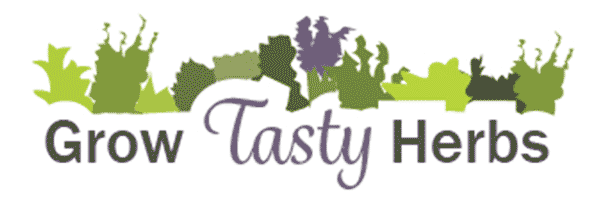Herbs, like all plants will grow better with a bit of appropriate pruning. Pruning is a gardening task which tends to make new gardeners nervous, and although it need not be difficult, a little knowledge about what you are doing can go a long way.
We are often unaware that we are pruning out herbs, but harvesting fresh herbs is doing just that – pruning the plant. When harvesting fresh herbs we usually take the young growing tips where the leaves are softer and tastier as these are the best to eat. This is called tip pruning and works very well for many plants to encourage compact and bushy growth.
Tip pruning via regular harvesting of young leaves for cooking is ideal for encouraging vigorous and bushy growth on herbs which grow as small shrubs or ground covers, or the ones which tend to develop woody stems over time. This includes basil, rosemary, mints, thyme, oregano and sage. This also applies to chillies although we do not eat the shoots, by tip pruning a few times while the plant is young you will encourage the plant to be denser and therefore increase the number of branches which will bear fruit (chillies).
Regular tip pruning of all of these herbs will encourage bushy growth and abundant new shoots for a continual harvest. Infrequently harvested herbs will have fewer new shoots and the plants will be sparser. Even if you do not cook with the herbs regularly, tip pruning the plants every week or two will encourage new growth and denser plants which are more attractive and will also provide a more plentiful harvest for the times the harvest is desired.
By regularly tip pruning these plants they will ensure a continued supply of soft new growth, and will delay the plants from developing woody stems. As these herbs age they develop woody stems and fewer young palatable leaves for harvesting. The woody stems do not reshoot readily when pruned, so always avoid cutting into woody growth unless you intend to replace your plant. If the plant needs to be pruned into a more attractive shape this will need to be done as the plant grows and the stems are still supple, as pruning woody growth will not correct a poorly shaped herb plant.
Once these woody herbs start to flower they will stop producing new leaves. Pruning off the flowers as they form will encourage more leaf growth and extend the productive life of your herb plant. The fresh young flowers of these herbs are also edible and can be added to your cooking along with the leaves. An exception here are chillies. If you remove the flowers you will prevent the plant from setting the chilli fruit.
Tip pruning is also the most beneficial harvesting and pruning method for those herbs which form woody trees such as bay leaf and lemon myrtle. These can both be grown in large pots in the herb garden and with regular tip pruning you will have a constant supply of flavoursome leaves. Pruning into the woody stems of these trees can be done to shape the tree and keep it small, and will not harm the tree.
Herbs which do not produce woody stems can be pruned quite heavily to encourage new growth.
Herbs which form a soft leaved rosette, including parsley, coriander, dill and some fennel varieties are best harvested by removing outside leaves regularly and before these leaves become old. Once the outside leaves age they become too course to be palatable and should be regularly removed to encourage new growth in the centre of the plant. These plants can have the majority of their leaves removed as needed, with the very new central shoots left intact, and will go on to provide further harvests. Regular harvesting will delay the plant setting seed and ensure a far more productive plant. Once the plant starts to send up a tall central shoot, it will flower and set seed. At this point it is no longer putting energy into producing the leaves desired for harvest and will need replacing. If the plant is allowed to flower and set seed, it will attract many bees and beneficial insects to the garden and provide seeds for future crops.
Lemon grass, a popular herb, is actually a grass and can be treated like other ornamental grasses in the garden. All grasses respond will to regular pruning and will thicken their growth in response to good pruning.
When harvesting lemon grass leaves for cooking or making tea, choose outer leaves which are still dark green and cut them low to the ground. Once a year, cut the entire plant off very short. This will not only tidy the plant but will increase vigour and the production of sweeter leaves. When the plant is cut low, it can easily be lifted and divided. If you like to use the base shoots of the lemon grass in cooking, it is recommended that the plant be divided and new plants established regularly as this harvesting method can deplete the plant.
If you have concerns about pruning herbs, practice frequent harvesting as this will encourage new growth and will negate the need for any further pruning in most herbs.
*Article published by Kate Wall






